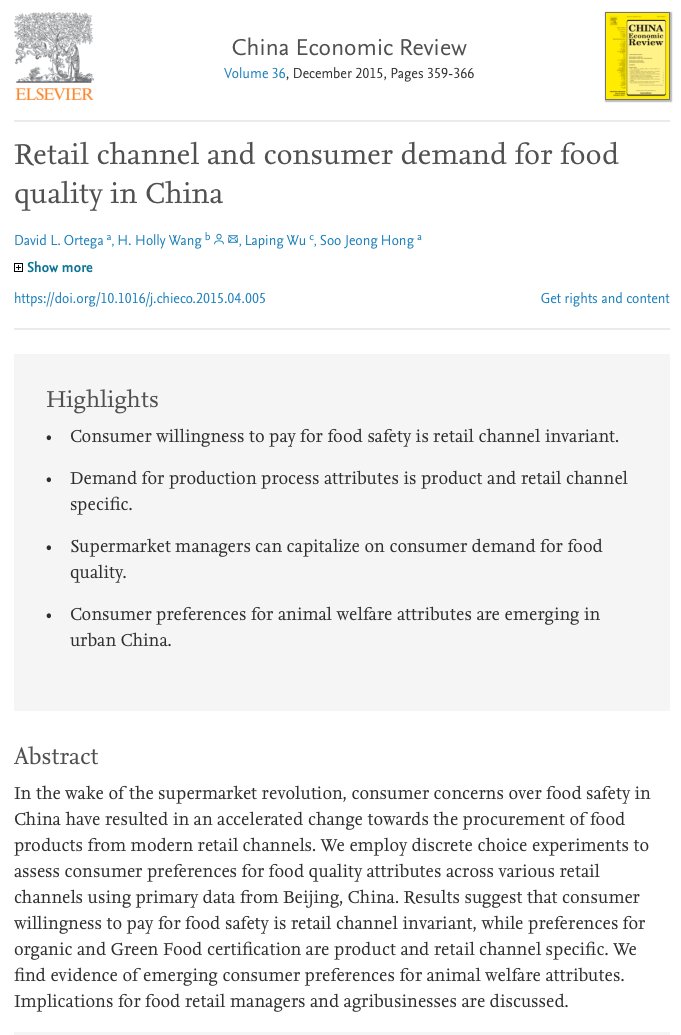In light of #COVID19, the ideas that most Americans have about Chinese #food preferences, and eating habits are far from reality. I find them dangerous as they fuel #sinophobia, and distract from addressing real problems. 1/n
I came across the following piece in @ConversationEDU which echoes my earlier thoughts on wet markets in #China  https://abs.twimg.com/emoji/v2/... draggable="false" alt="🇨🇳" title="Flag of China" aria-label="Emoji: Flag of China"> and #COVID19. It is written by two anthropologists and provides an excellent perspective. Here are some additional thoughts... 2/n http://theconversation.com/why-shutting-down-chinese-wet-markets-could-be-a-terrible-mistake-130625">https://theconversation.com/why-shutt...
https://abs.twimg.com/emoji/v2/... draggable="false" alt="🇨🇳" title="Flag of China" aria-label="Emoji: Flag of China"> and #COVID19. It is written by two anthropologists and provides an excellent perspective. Here are some additional thoughts... 2/n http://theconversation.com/why-shutting-down-chinese-wet-markets-could-be-a-terrible-mistake-130625">https://theconversation.com/why-shutt...
Contrary to popular belief, most consumers in China don’t eat wildlife and over half of them shun the idea. Consumption of exotic animals tends to be driven by the status rarity provides. It is not the norm. 3/n https://link.springer.com/article/10.1007/s10531-014-0708-4">https://link.springer.com/article/1...
Attitudes are also changing with regards to animal welfare, especially in urban areas. See results from a study I did back in 2013. Free range  https://abs.twimg.com/emoji/v2/... draggable="false" alt="🐓" title="Rooster" aria-label="Emoji: Rooster">,
https://abs.twimg.com/emoji/v2/... draggable="false" alt="🐓" title="Rooster" aria-label="Emoji: Rooster">, https://abs.twimg.com/emoji/v2/... draggable="false" alt="🥚" title="Egg" aria-label="Emoji: Egg">, and
https://abs.twimg.com/emoji/v2/... draggable="false" alt="🥚" title="Egg" aria-label="Emoji: Egg">, and https://abs.twimg.com/emoji/v2/... draggable="false" alt="🐷" title="Pig face" aria-label="Emoji: Pig face"> are now being labelled and sold in domestic supermarkets 4/n
https://abs.twimg.com/emoji/v2/... draggable="false" alt="🐷" title="Pig face" aria-label="Emoji: Pig face"> are now being labelled and sold in domestic supermarkets 4/n
https://www.sciencedirect.com/science/article/pii/S1043951X15000589">https://www.sciencedirect.com/science/a...
https://www.sciencedirect.com/science/article/pii/S1043951X15000589">https://www.sciencedirect.com/science/a...
Many Westerners that travel to China come back with stories and pictures of night markets selling rare and exotic foods (e.g. scorpions and yak penis on a stick). This is far from representative of eating habits and mainly capitalizes on shock value from visitors 5/n
Yes, chickens with heads attached and offal are common in many dishes. But this is not unique to China. Fried gizzards, and rocky mountain oysters can be easily found in  https://abs.twimg.com/emoji/v2/... draggable="false" alt="🇺🇸" title="Flag of United States" aria-label="Emoji: Flag of United States">. Gator tail? I lived in Florida. Go to Europe or Latin America, and things get more interesting 6/n
https://abs.twimg.com/emoji/v2/... draggable="false" alt="🇺🇸" title="Flag of United States" aria-label="Emoji: Flag of United States">. Gator tail? I lived in Florida. Go to Europe or Latin America, and things get more interesting 6/n
The issue is not what or how Chinese consumers eat. That’s part of their culture, and should be embraced. The attention should be on ensuring they have a safe and reliable food system. On this, the US has many lessons to offer n/n

 Read on Twitter
Read on Twitter ,https://abs.twimg.com/emoji/v2/... draggable="false" alt="🥚" title="Egg" aria-label="Emoji: Egg">, andhttps://abs.twimg.com/emoji/v2/... draggable="false" alt="🐷" title="Pig face" aria-label="Emoji: Pig face"> are now being labelled and sold in domestic supermarkets 4/n https://www.sciencedirect.com/science/a..." title="Attitudes are also changing with regards to animal welfare, especially in urban areas. See results from a study I did back in 2013. Free range https://abs.twimg.com/emoji/v2/... draggable="false" alt="🐓" title="Rooster" aria-label="Emoji: Rooster">,https://abs.twimg.com/emoji/v2/... draggable="false" alt="🥚" title="Egg" aria-label="Emoji: Egg">, andhttps://abs.twimg.com/emoji/v2/... draggable="false" alt="🐷" title="Pig face" aria-label="Emoji: Pig face"> are now being labelled and sold in domestic supermarkets 4/n https://www.sciencedirect.com/science/a..." class="img-responsive" style="max-width:100%;"/>
,https://abs.twimg.com/emoji/v2/... draggable="false" alt="🥚" title="Egg" aria-label="Emoji: Egg">, andhttps://abs.twimg.com/emoji/v2/... draggable="false" alt="🐷" title="Pig face" aria-label="Emoji: Pig face"> are now being labelled and sold in domestic supermarkets 4/n https://www.sciencedirect.com/science/a..." title="Attitudes are also changing with regards to animal welfare, especially in urban areas. See results from a study I did back in 2013. Free range https://abs.twimg.com/emoji/v2/... draggable="false" alt="🐓" title="Rooster" aria-label="Emoji: Rooster">,https://abs.twimg.com/emoji/v2/... draggable="false" alt="🥚" title="Egg" aria-label="Emoji: Egg">, andhttps://abs.twimg.com/emoji/v2/... draggable="false" alt="🐷" title="Pig face" aria-label="Emoji: Pig face"> are now being labelled and sold in domestic supermarkets 4/n https://www.sciencedirect.com/science/a..." class="img-responsive" style="max-width:100%;"/>


